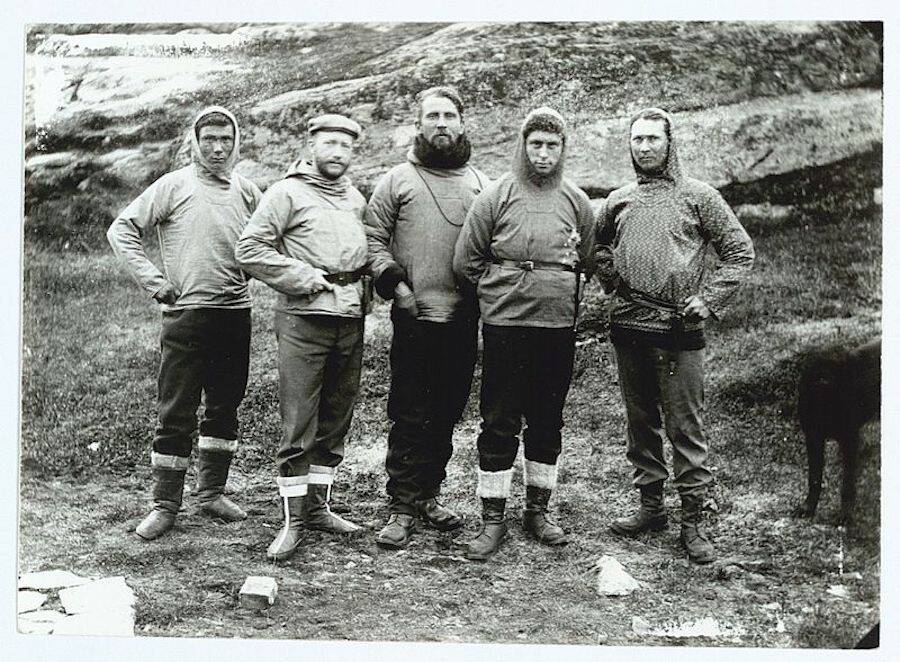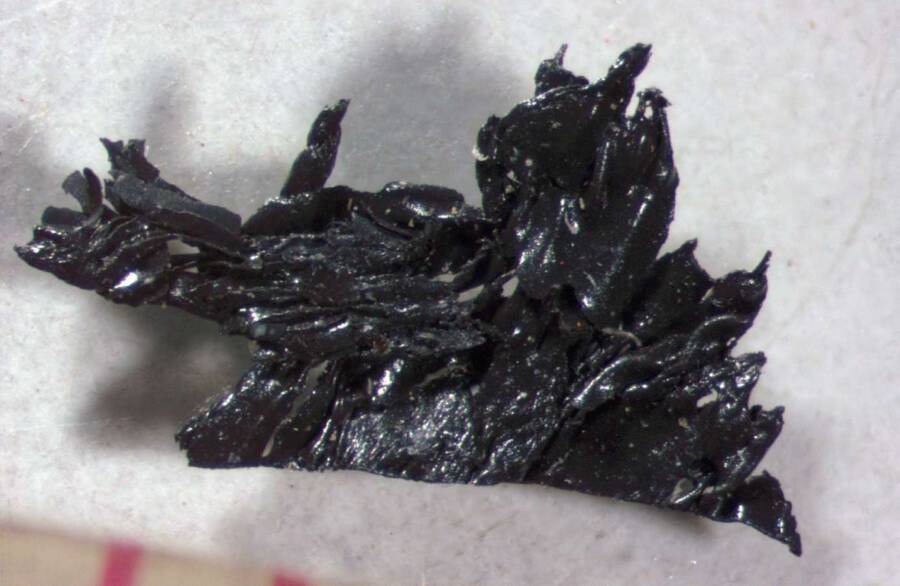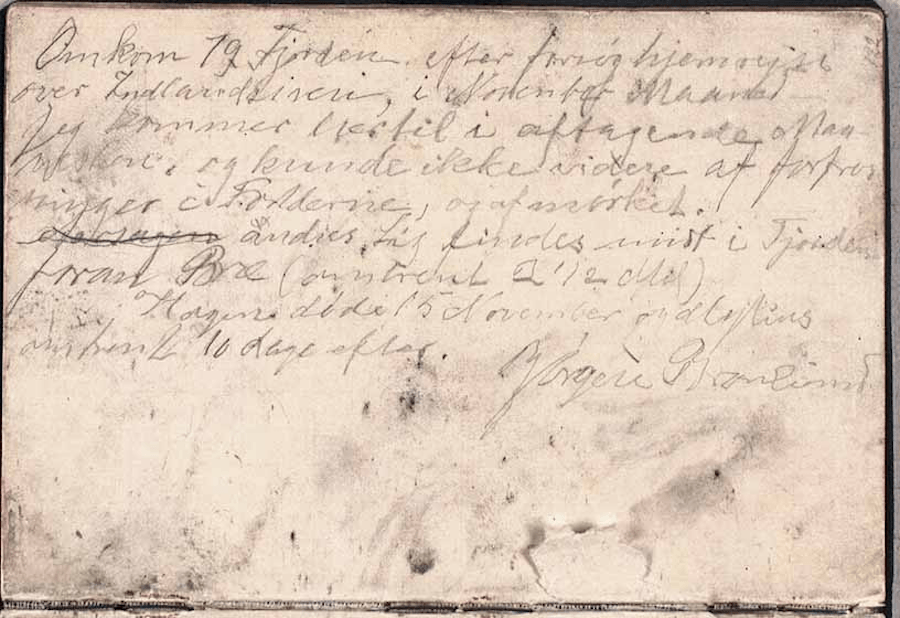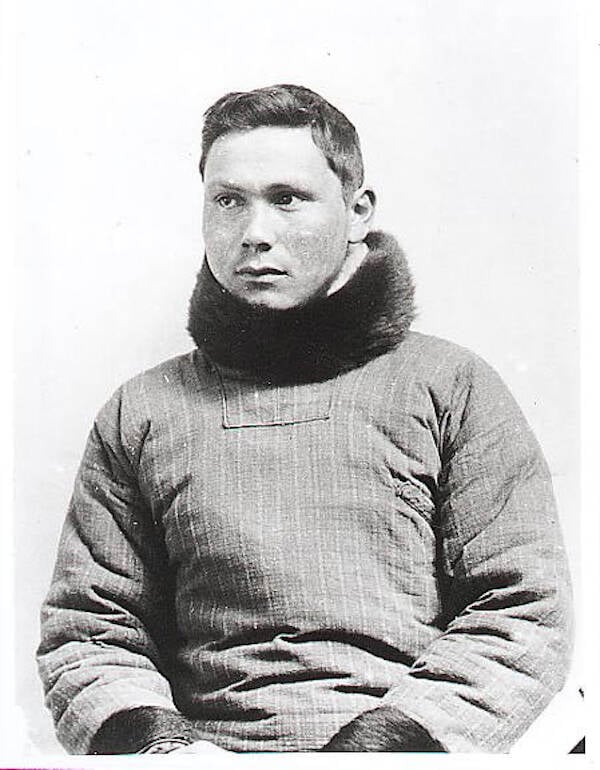Jørgen Brønlund's final diary entry has baffled experts for more than a century — until now.

Wikimedia CommonsMembers of the Denmark Expedition to the Northeast Coast of Greenland around 1902-1904: Jørgen Brønlund, Alfred Bertelsen, Ludvig Mylius-Erichsen, Knud Rasmussen, and Harald Moltke.
The death of Inuit explorer Jørgen Brønlund was anything but peaceful. The third to perish during a grueling three-man expedition in his native Greenland, Brønlund’s body was found frozen in a cave in 1907.
He had recorded his final moments in a diary, which contained a black smudge that has baffled experts ever since.
According to Ancient Origins, the curious material on the last page of that historic document has finally been identified — providing researchers with unprecedented insight into the explorer’s grim final hours. As published in the Archaeometry journal, the smudge was made of “burnt rubber, oils and feces.”
Only after extensive analysis of the century-old blemish did the University of Southern Denmark discover the truth: Brønlund had tried to light a petroleum burner with his own waste to stay alive — but died of exposure and exhaustion, nonetheless. According to LiveScience, he was buried at the site in 1908.

University of Southern Denmark/Kaare Lund RasmussenThe black smudge that had baffled researchers for 112 years.
Brønlund had made it farther than his friends before falling victim to the freezing temperatures. Led by Danish ethnologist Ludvig Mylius-Erichsen, the Denmark Expedition to the Northeast Coast of Greenland began in 1906 — and saw the team leader and cartographer Peter Høeg-Hagen die on the ice.
“I reached this place under a waning moon, and cannot go on, because of my frozen feet and the darkness,” Brønlund’s final diary entry read. “The bodies of the others are in the middle of the fjord.”
The polar explorer had made it to a sheltering cave in November 1907, during a desperate dash back to base camp over inland ice. In a tragic twist, Brønlund wasn’t too far from his destination when he died. Another expedition the following March found his body.
While the man’s frozen corpse was respectfully buried at the same site, his diary was added to the collection at the Royal Library in Copenhagen. As the new study noted, the last page of that document contained “an adherent black spot” that mystified experts for more than a century. So curious were some, that they stole it.
An unnamed researcher removed the diary page in 1993 for purported analysis, according to lead study author Kaare Lund Rasmussen, a professor in the Department of Physics, Chemistry and Pharmacy at the University of Southern Denmark.

The Royal Library of CopenhagenThe final farewell entry Brønlund recorded in his diary while dying in the sheltering cave in November 1907.
“The spot was immediately brought to the National Museum for examination,” said Rasmussen. “There was no commercial or otherwise gain for this person. Nowadays, we do not analyze samples without written authorization, but it was entirely different then.”
As Rasmussen’s study explained, the museum’s Natural Science Unit was hampered by technology of the time and couldn’t identify the chemical makeup of this smudge. Only now, with modern advances like X-ray fluorescence and plasma mass spectrometry have renewed efforts finally succeeded.
What they found were clear signs of calcium, titanium, and zinc — a trio that didn’t match any known rock formations on the expedition’s route. When calcite, rutile, and zincite were identified thereafter, it became clear that rubber was present — likely from a burner that the explorer had carried with him.
The research team also detected organic compounds such as lipids, petroleum, and human fecal matter.
“At this time, Brønlund had starved for weeks, was tired beyond his capacity, and he was freezing,” the study said. “It is likely that his hands were shaking when he used the matches from the depot to pre-heat and turn on the stove in the small cave.”

The Royal Library of CopenhagenBrønlund was buried at the site of his discovery in 1908, while his diary has been added to the Royal Library of Copenhagen.
The stoves in reference metabolized alcohol in order to preheat the liquid before lighting the burner. With no alcohol available at the sheltering cave, Brønlund took to desperate measures — leaving a hint of his desperate efforts smeared in his diary.
For the researchers involved, the find “speaks to the dire circumstances and poor conditions during his last dismal days.” What had begun as a quest to chart Greenland’s Northeastern territories had ended in Brønlund’s realization that the end had come — and one final message for us all.
After learning about the mysterious black smudge in a dead polar explorer’s diary, read about how the lost Franklin Expedition to the Arctic ended in cannibalism. Then, learn about three historic explorers who were captivated by mermaid sightings.




